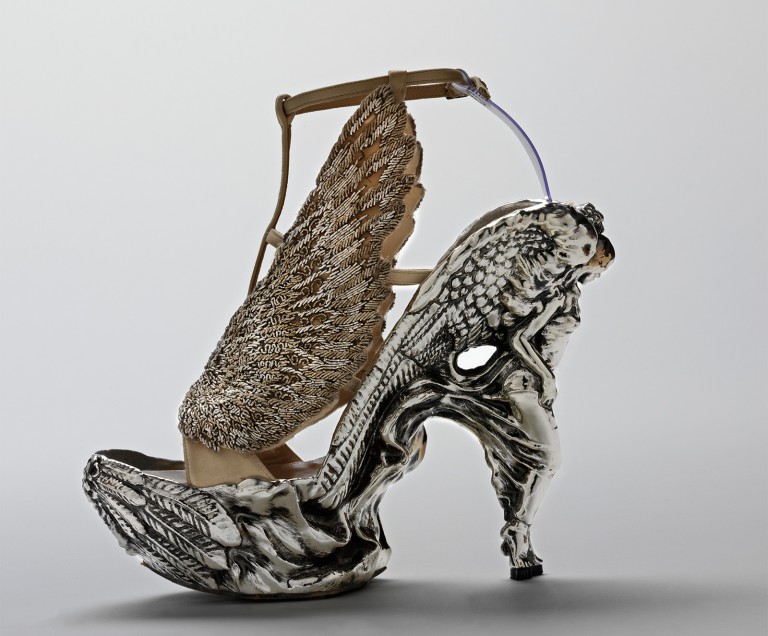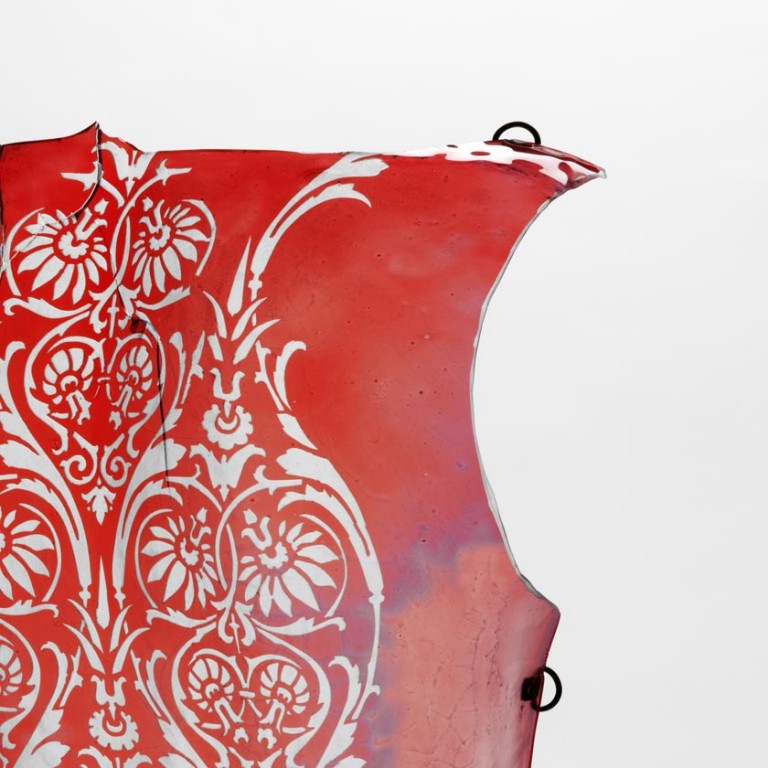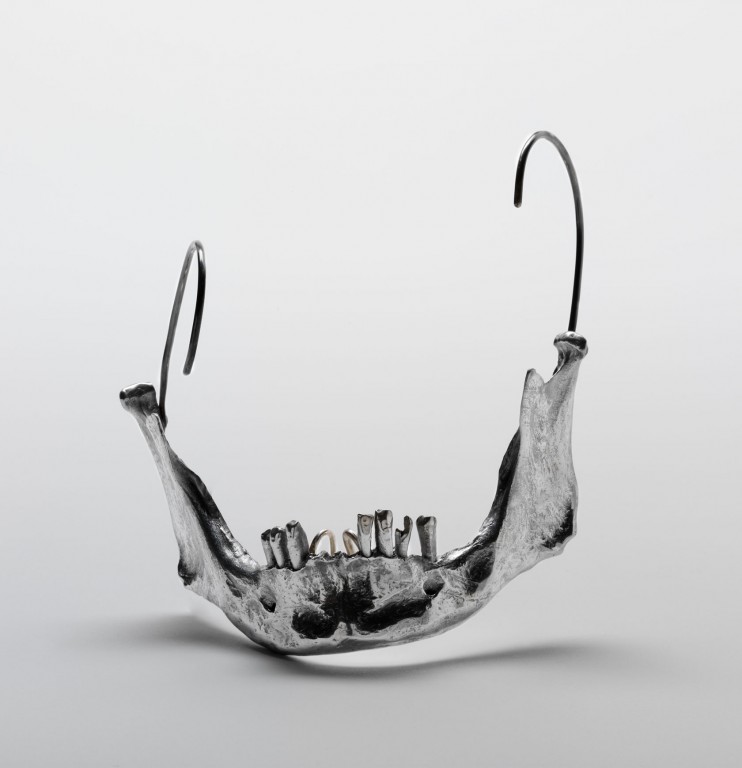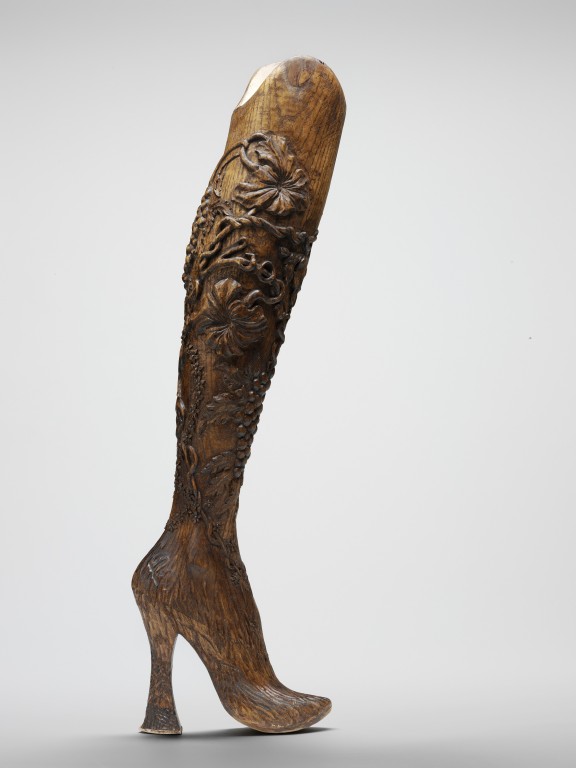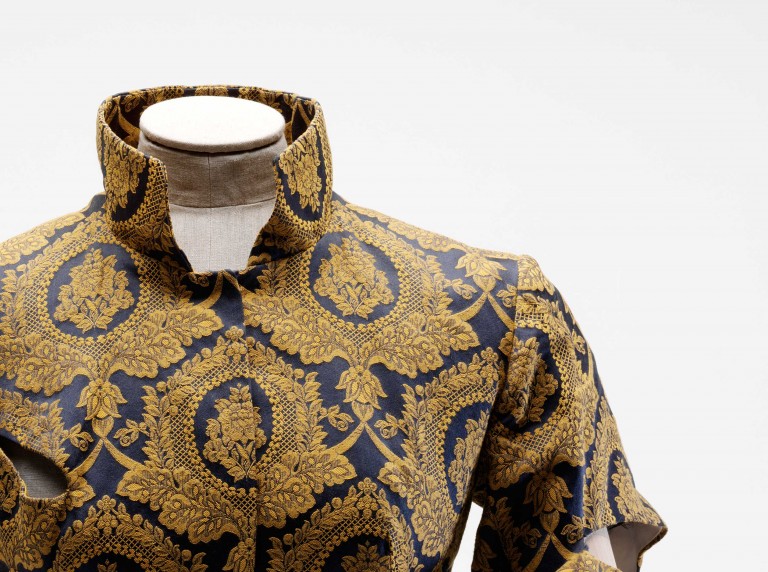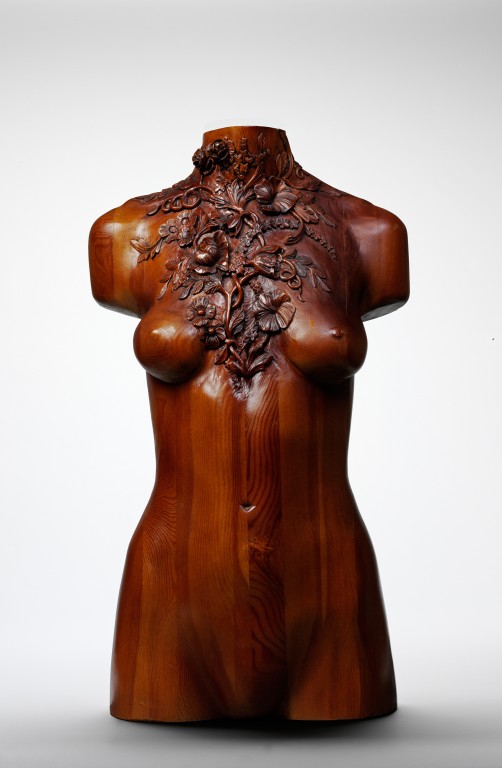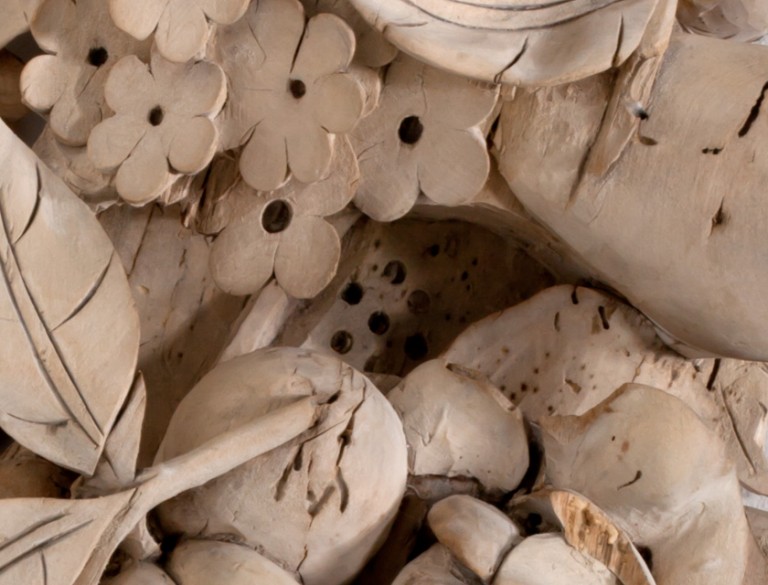Bust
This wooden bust was made in 2001 and used as a decorative mannequin in the newly opened Alexander McQueen flagship store in Tokyo.
McQueen commissioned master wood carver Paul Ferguson to create two identical busts with decorative flowers surrounding the upper chest and neck. The designer specified that he wanted the wood to look like flesh. To achieve this, Ferguson choose to glue blocks of pinewood into one piece and hand carve it in order to expose the organic pattern of the wood’s natural rings, which contrasted with the intricate details of the carved flowers. The form was based on a mould of model Laura Morgan’s torso which Ferguson had been given by McQueen. It took Ferguson several weeks to hand carve, hollow and lacquer the two busts. The finished bust fuses McQueen’s deep interest in art history with his admiration for traditional craftsmanship.
McQueen had collaborated with Ferguson three years previously, when he commissioned him to carve the wooden prosthetic legs worn by Aimee Mullins in No. 13, Spring/Summer 1999. Both examples draw on the rich tradition of seventeenth-century wood carvers such as Grinling Gibbons and emphasis on nature as promoted by the late Victorian Arts and Crafts Movement.
The first Alexander McQueen store opened in 1999 at 47 Conduit Street in Mayfair, London. Several international flagship stores opened after The Gucci Group (now Kering) acquired a 51% stake in the Alexander McQueen company in 2000. Architect William Russell of design consultancy Pentagram was commissioned to create the flagship stores as ‘caves filled with light’. Russell and McQueen collaborated closely to realise this concept and make each store a unique shopping experience. This bust is an example of the small design details that McQueen carefully considered as part of the brand’s retail expansion.

